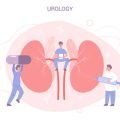Introduction to Socioeconomic Inequalities in the UK
Socioeconomic inequalities remain a significant challenge within the United Kingdom, impacting various aspects of daily life and well-being. These disparities are often shaped by differences in income, education, employment, housing, and access to essential services. For families and children, such inequalities can create barriers that influence health outcomes from an early age. In particular, paediatric healthcare is deeply affected by these social determinants, with children from lower socioeconomic backgrounds facing greater obstacles in accessing necessary medical and rehabilitation services. Understanding how these inequalities manifest across regions and communities is crucial for addressing gaps in care, especially when it comes to supporting children with disabilities or those requiring specialised rehabilitation. Recognising the relevance of socioeconomic factors to paediatric health allows policymakers and healthcare professionals to better tailor interventions aimed at promoting equity for all children across the UK.
2. Understanding Paediatric Rehabilitation
Paediatric rehabilitation is a specialised area of healthcare aimed at supporting children and young people who experience physical, developmental, or cognitive challenges due to illness, injury, or congenital conditions. In the UK, paediatric rehabilitation services are designed to optimise each child’s functional abilities, promote independence, and enhance quality of life within their home, school, and community environments.
Definition of Paediatric Rehabilitation
Paediatric rehabilitation encompasses a multidisciplinary approach involving healthcare professionals such as physiotherapists, occupational therapists, speech and language therapists, psychologists, and medical doctors. The goal is to help children achieve their highest potential for mobility, communication, self-care, and participation in daily activities. Services are tailored according to the child’s unique needs and circumstances.
Types of Paediatric Rehabilitation Services in the UK
| Type of Service | Description | Typical Setting |
|---|---|---|
| Physiotherapy | Focuses on improving movement, strength, and coordination. | NHS hospitals, community clinics, schools |
| Occupational Therapy | Supports development of everyday skills like dressing and feeding. | Community health centres, home visits |
| Speech and Language Therapy | Aims to improve communication and swallowing abilities. | NHS trusts, schools, specialist centres |
| Psychological Support | Addresses emotional wellbeing and behavioural concerns. | CAMHS (Child & Adolescent Mental Health Services), clinics |
| Specialist Medical Care | Includes ongoing medical management for complex needs. | Tertiary hospitals, regional centres |
Goals of Paediatric Rehabilitation in the UK Context
- Enhancing Functional Independence: Enabling children to participate fully in family life, education, and recreation.
- Supporting Inclusion: Promoting integration into mainstream settings wherever possible.
- Empowering Families: Providing education and support to parents/carers to foster resilience and advocacy skills.
- Lifelong Perspective: Recognising that rehabilitation needs may evolve from childhood through adolescence into adulthood.
The Importance of Early Intervention
The NHS emphasises early intervention as a key component of effective paediatric rehabilitation. Timely access to services can significantly improve long-term outcomes for children with disabilities or health conditions. However, socioeconomic inequalities can create barriers to accessing timely assessment and treatment—an issue which is explored further in subsequent sections.

3. Barriers to Accessing Paediatric Rehabilitation
For many families in the UK, socioeconomic status plays a significant role in determining access to paediatric rehabilitation services. Families from lower socioeconomic backgrounds often encounter a range of obstacles that can hinder their ability to obtain timely and effective care for their children.
Geographic Disparities
Access to paediatric rehabilitation is not uniform across the UK. In more rural or deprived urban areas, specialised rehabilitation services may be limited or located far from where families live. This geographic isolation can result in long travel times, increased transportation costs, and time away from work or school, making it challenging for families with fewer resources to attend regular appointments.
Cultural and Language Barriers
Cultural differences and language barriers can also affect access to rehabilitation. Families from minority ethnic backgrounds may face challenges navigating the healthcare system due to unfamiliarity with available services, differing health beliefs, or a lack of culturally sensitive support. Limited English proficiency can make communication with healthcare providers more difficult, potentially leading to misunderstandings or reduced engagement with recommended interventions.
Financial Constraints
Although the NHS provides many paediatric rehabilitation services free at the point of use, hidden costs remain. These can include expenses for transport, childcare for siblings during appointments, or lost earnings due to time off work. For families already experiencing financial hardship, these additional burdens can deter them from seeking help or lead to missed appointments and inconsistent care.
The Compounded Effect of Multiple Barriers
Often, these barriers do not occur in isolation but compound one another. A family facing both geographic challenges and financial constraints may find it nearly impossible to regularly access specialist services. When cultural or language factors are added to the equation, the likelihood of children receiving consistent and high-quality rehabilitation further diminishes.
The Importance of Addressing Barriers
Tackling these obstacles requires a multifaceted approach that recognises the unique challenges faced by disadvantaged families. Only by addressing the interplay of geographic, cultural, and financial factors can we begin to ensure equitable access to paediatric rehabilitation for all children across the UK.
4. Impact of Inequalities on Health Outcomes
Socioeconomic disparities in access to paediatric rehabilitation services have significant consequences for childrens health outcomes and overall wellbeing. Children from lower-income families or deprived communities often face more barriers to accessing high-quality rehabilitation, which can negatively influence their recovery trajectory and long-term prospects.
Short-Term Rehabilitation Outcomes
Inequalities in access mean that children may experience delays in starting treatment, receive fewer sessions, or rely on less specialised care. These factors can result in slower progress, incomplete rehabilitation, or even deterioration of the child’s condition. The table below illustrates some common differences seen between children from varying socioeconomic backgrounds:
| Socioeconomic Status | Access to Services | Rehabilitation Outcomes |
|---|---|---|
| Higher Income | Timely and frequent access to specialist services | Faster recovery, improved function, better quality of life |
| Lower Income | Delayed access, limited sessions, fewer resources | Slower progress, risk of chronic disability, lower quality of life |
Long-Term Wellbeing and Life Chances
The impact of these inequalities extends well beyond the immediate period of rehabilitation. Children who do not receive adequate intervention may be at greater risk of ongoing physical limitations, reduced participation in education and social activities, and mental health challenges such as anxiety or low self-esteem. This perpetuates a cycle where socioeconomic disadvantage leads to poorer health outcomes, which in turn limits opportunities later in life.
The Broader Societal Implications
From a public health perspective, addressing these inequalities is essential. Improved access to paediatric rehabilitation for all children not only supports individual wellbeing but also reduces the long-term burden on health and social care systems across the UK. As such, tackling socioeconomic barriers is both a moral imperative and a practical strategy for building healthier communities.
5. Initiatives and Policy Responses
Addressing socioeconomic inequalities in access to paediatric rehabilitation requires coordinated efforts across multiple levels of the healthcare system, with a strong focus on policy and practical initiatives. In recent years, the UK government, local authorities, and the NHS have introduced several strategies aimed at reducing disparities and improving health outcomes for children from disadvantaged backgrounds.
Current Strategies in Place
One key approach involves targeted investment in early intervention programmes, which aim to identify developmental needs as soon as possible and provide support before challenges become more entrenched. These programmes often collaborate with schools, community health workers, and social care services to ensure that families receive holistic support. The Healthy Child Programme is an example of a national initiative designed to promote health equity by offering universal and targeted services to all children, with extra support for those in deprived areas.
NHS Initiatives
The NHS has placed a significant emphasis on reducing health inequalities through its Long Term Plan. This includes specific commitments to improve access to therapies and rehabilitation for children with complex needs. Integrated Care Systems (ICSs) are now being rolled out across England to bring together NHS organisations, local councils, and other partners, aiming to deliver joined-up care tailored to local populations. Additionally, funding streams such as the Children and Young People’s Transformation Programme focus on enhancing community-based rehabilitation services and ensuring they are accessible regardless of a family’s socioeconomic status.
Governmental Policies
The UK government has recognised the role of social determinants in shaping health outcomes and has responded by embedding health inequality reduction into statutory frameworks. The Equality Act 2010 underpins many policies aimed at ensuring fair access to healthcare services for all children. Furthermore, there are ongoing efforts to address broader factors such as housing quality, income security, and educational opportunities, recognising that these have a direct impact on a child’s ability to benefit from rehabilitation services.
Challenges and Future Directions
Despite these positive steps, implementation remains uneven across regions due to differences in local resources and infrastructure. There is a growing call for more robust data collection and evaluation mechanisms to measure the effectiveness of current policies. Policymakers are also urged to involve families and children themselves in service design, ensuring that interventions are responsive to real-world needs. Continued advocacy and cross-sector collaboration will be essential in closing the gap and achieving equitable access for every child who requires paediatric rehabilitation in the UK.
6. Recommendations for Improving Equity
Bridging the gap in access to paediatric rehabilitation services across the UK requires a collaborative, multi-layered approach. Below are actionable recommendations tailored for healthcare providers, policymakers, and communities to help create a more equitable system.
For Healthcare Providers
Enhance Awareness and Training
Healthcare professionals should receive ongoing training on recognising socioeconomic barriers and their impact on families’ ability to engage with rehabilitation services. By developing cultural competence and understanding the specific challenges faced by disadvantaged groups, clinicians can provide more targeted support and advocacy for their patients.
Strengthen Outreach and Navigation Support
Implementing dedicated patient navigation services can help families from lower socioeconomic backgrounds better understand their options and access appropriate care pathways. Proactive outreach, especially in underserved areas, can also ensure that all children are offered timely referrals to rehabilitation services.
For Policymakers
Invest in Community-Based Services
Expanding the provision of paediatric rehabilitation within local communities—rather than relying solely on hospital-based centres—reduces travel burdens and makes it easier for families to attend appointments. Funding should prioritise regions with higher levels of deprivation to close existing service gaps.
Address the Social Determinants of Health
Policies that tackle underlying factors such as poverty, housing instability, and transport accessibility will have a direct impact on health equity. Consider integrating social support schemes with health interventions to provide holistic assistance for affected families.
For Communities and Local Organisations
Promote Collaboration and Advocacy
Community groups, schools, and voluntary organisations play a key role in identifying unmet needs and advocating for better services. Building strong partnerships with NHS trusts and local authorities can amplify the voices of those most affected by inequalities.
Empower Families Through Education
Providing accessible information sessions and peer support networks empowers parents and carers to seek out rehabilitation resources confidently. Local champions or parent ambassadors can bridge communication gaps between families and service providers.
A Collective Effort for Lasting Change
Tackling socioeconomic inequalities in access to paediatric rehabilitation is a complex challenge that demands commitment from every level of society. By working together—healthcare professionals, policymakers, communities, and families—we can ensure that every child has the opportunity to reach their full potential, regardless of their background.


